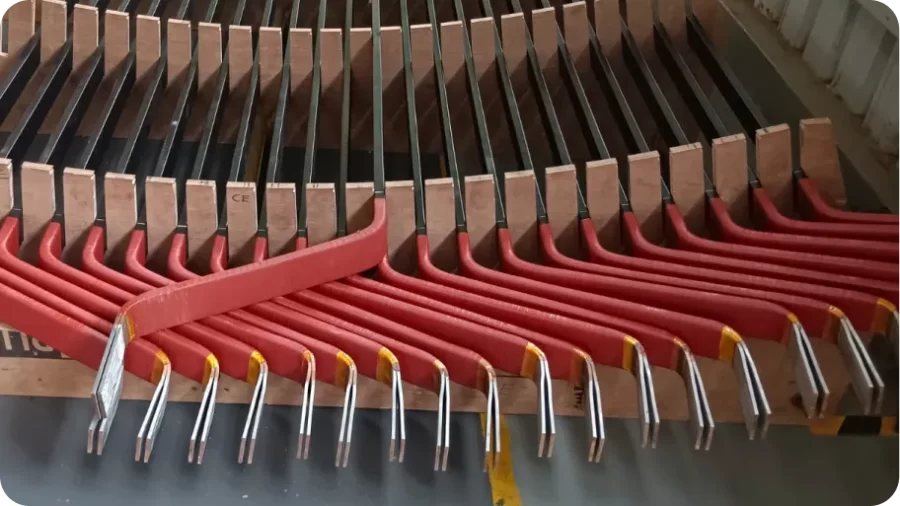Wires For High Voltage Windings
G.J wires manufactures insulated wires for the entire range of HV motors and generators in any imaginable configuration.
We have a thorough understanding of the role of insulation when it comes to HV motors such as synchronous motors, asynchronous induction motors, DC motors and HV generators such as diesel gensets, small hydro and turbine driven generators. Our team is fully conversant with NEMA and IEC specifications and has exposure to utility, industrial, commercial, institutional, and residential applications. Our company has a well established supply chain to procure various insulation raw materials.
MICA PAPER INSULATED COPPER WIRES
Mica being an inorganic material is the most preferred insulation for High voltage application due its excellent resistance to corona. Mica paper is backed with polyester film on one or both sides, for voltages above 3.30 kv mica paper is wrapped on a wire which has a primary coating of class 200 enamel coating for increased dielectric strength, insulation increase ranges from 0.36 mm to 0.50 mm depending on the voltage level of the coil. Mica paper with polyester film is also available with adhesive coating for better bond strength and void free turn to turn insulation. Mica paper is normally applied in 2 to 3 layers as per customer requirement.
FIBERGLASS OR DAGLAS COVERED COPPER WIRES
Glass or Daglas covered wire with primary coating of class 200 enamel is also extensively used for high voltage coils especially when the coils are manufactured without sophisticated and automated coil forming machines. Glass or Daglas insulation has better resistance to mechanical abuses that occur during coil manufacturing operation. With thick coating of enamel processed with solid dies for enamelling ensures consistent high voltage endurance and a fine covering of daglas or glass covering provides high dielectric strength as high as 8 kv between two wires. Daglas insulation when provided also withstands the twisting or transposing at the evolute of the coil. Repair shops can use this wire and form the coil on the former with manual shaping.



